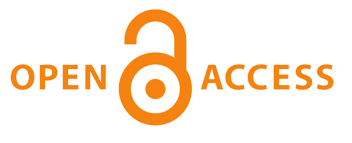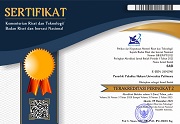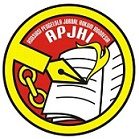Peran Organisasi Sayap Partai Politik dalam Kaderisasi Partai Politik di Indonesia
 )
)
(1) Fakultas Hukum Universitas Muhammadiyah Yogyakarta, Yogyakarta, Indonesia
(2) Fakultas Hukum Universitas Muhammadiyah Yogyakarta, Yogyakarta, Indonesia

 Corresponding Author
Corresponding Author
Abstract
The political parties that emerge in Indonesia have a distinct catch-all character; they are dependent on individual figures and lack a defined socioeconomic foundation. For political parties, the regeneration process has become a struggle. Because certain political parties lack a clear regeneration system, oligarchic recruiting is a common occurrence. Religious affiliations, local links, local commonalities, and proximity to political party leaders all have a role in recruitment trends. This research aims to explain the role of the under bow of the political party on regeneration. This is a legal-normative study that relies on secondary data. The research material is divided into three categories: primary, secondary, and tertiary. The following factors, according to this study, influence political party regeneration and recruitment: 1) political dynasty has an impact on unhealthy regeneration; 2) political dowry has an impact on unhealthy competition among political party members; and 3) popularity factor has an impact on how quickly people can become political party members. Political parties' inability to recruit and regenerate has an impact on their capacity to fulfill their role as the primary source of national leadership selection. Alternative solutions to these problems include strengthening the under bow of political parties. The existence of under bow of political parties will aid in the transmission of political party doctrine. Political parties will be rewarded with the best members who will fight for their vision and goals. Furthermore, the under bow of political parties can serve as educational institutions for potential members before they join the party.
Keywords
DOI
10.47268/sasi.v27i4.563
Published
2021-12-31
How To Cite
@article{SASI563,
author = {Septi Wijayanti and Kelik Iswandi},
title = {Peran Organisasi Sayap Partai Politik dalam Kaderisasi Partai Politik di Indonesia},
journal = {SASI},
volume = {27},
number = {4},
year = {2021},
keywords = {Regeneration; Under Bow of Political Party; Political Party},
abstract = {The political parties that emerge in Indonesia have a distinct catch-all character; they are dependent on individual figures and lack a defined socioeconomic foundation. For political parties, the regeneration process has become a struggle. Because certain political parties lack a clear regeneration system, oligarchic recruiting is a common occurrence. Religious affiliations, local links, local commonalities, and proximity to political party leaders all have a role in recruitment trends. This research aims to explain the role of the under bow of the political party on regeneration. This is a legal-normative study that relies on secondary data. The research material is divided into three categories: primary, secondary, and tertiary. The following factors, according to this study, influence political party regeneration and recruitment: 1) political dynasty has an impact on unhealthy regeneration; 2) political dowry has an impact on unhealthy competition among political party members; and 3) popularity factor has an impact on how quickly people can become political party members. Political parties' inability to recruit and regenerate has an impact on their capacity to fulfill their role as the primary source of national leadership selection. Alternative solutions to these problems include strengthening the under bow of political parties. The existence of under bow of political parties will aid in the transmission of political party doctrine. Political parties will be rewarded with the best members who will fight for their vision and goals. Furthermore, the under bow of political parties can serve as educational institutions for potential members before they join the party.},
issn = {2614-2961}, pages = {475--491} doi = {10.47268/sasi.v27i4.563},
url = {https://fhukum.unpatti.ac.id/jurnal/sasi/article/view/563}
}
Jurnal
[1] Aminuddin, M. F., & Ramadlan, M. F. S. (2015). Match-All Party: Pragmatisme Politik Dan Munculnya Spesies Baru Partai Politik Di Indonesia Pasca Pemilu 2009. Jurnal Politik, 1(1), 39-74.
https://doi.org/10.7454/jp.v1i1.9
[2] Ardha, B. (2014). Social Media Sebagai Media Kampanye Partai Politik 2014 di Indonesia. Jurnal Visi Komunikasi, 13(1), 105-120.
[3] Asshiddiqie, J. (2006). Parpol dan Pemilu Sebagai Instrumen Demokrasi. Jurnal Konstitusi, 3(4), 6-27.
[4] Chandranegara, I. S., & Paputungan, M. (2020). Kegiatan Organisasi Sayap Partai Politik yang Bertentangan Dengan UUD 1945 Sebagai Alasan Pembubaran Partai Politik Oleh Mahkamah Konstitusi. Jurnal Penelitian Hukum De Jure, 20(1), 117-136.
https://doi.org/10.30641/dejure.2020.V20.117-136
[5] Darmawan, E., & Septiana, A. (2019). Analisis Fungsi Partai Politik Pada Pilkada Musi Banyuasin 2017 (Studi Terhadap Partai Politik Pengusung Pasangan Dodi Reza dan Beni Hernedi. Jurnal Studi Sosial dan Politik, 3(1), 28-41.
https://doi.org/10.19109/jssp.v3i1.4066
[6] Hajad, V. (2016). Kandidasi Partai Aceh Menjelang Pemilihan Gubernur 2017. Government: Jurnal Ilmu Pemerintahan, 9(2), 63-70.
[7] Hanafi, R. I. (2016). Pemilihan Langsung Kepala Daerah di Indonesia: Beberapa Catatan Kritis Untuk Partai Politik. Jurnal Penelitian Politik, 11(2), 1-16.
[8] Hussein, H., Riza, M., Pangerang Moenta, A., & Ilyas, A. (2018). Implementation of Functions of Political Party in Indonesian Constitutional Systems, 80, 146-151.
[9] Imansyah, T. (2012). Regulasi Partai Politik Dalam Mewujudkan Penguatan Peran dan Fungsi Kelembagaan Partai Politik. Jurnal RechtsVinding: Media Pembinaan Hukum Nasional, 1(3), 375-395.
https://doi.org/10.33331/rechtsvinding.v1i3.91
[10] Istania, R. (2009). Split Ticket Voting: Menumbuhkan Kegairahan Politik Lokal?. Jurnal Borneo Administrator, 5(1), 1-16.
[11] Junaidi, J. (2020). Recruitment/Kaderization Function of Political Party in Local Election with Single Candidate. Melayunesia, 4(1), 56-74.
[12] Kambo, G. A. (2017). Institutionalization Process Dymension of Political Parties (Study of Institutionalization of Golkar Party in South Sulawesi Province). 1(2), 77-87.
[13] Kumar, K. A. (2017). Role and Functions of Political Parties in Democracy. Issue 1 South-Asian Journal of Multidisciplinary Studies (SAJMS), 4(1), 2349-7858.
[14] Mustika, R., & Arifianto, S. (2018). Komodifikasi "Popularitas Selebritis" untuk Mendulang Suara Pemilu Legislatif 2019. Jurnal Studi Komunikasi dan Media, 22(2), 139-50.
https://doi.org/10.31445/jskm.2018.220204
[15] Pasaribu, P. (2017). Peranan Partai Politik Dalam Melaksanakan Pendidikan Politik. JPPUMA: Jurnal Ilmu Pemerintahan dan Sosial Politik UMA (Journal of Governance and Political Social UMA), 5(1), 51-59.
https://doi.org/10.31289/jppuma.v5i1.1125
[16] Pinilih, S. A. G. (2017). Mendorong Transparansi Dan Akuntabilitas Pengaturan Keuangan Partai Politik. Mimbar Hukum-Fakultas Hukum Universitas Gadjah Mada, 29(1), 69-81.
https://doi.org/10.22146/jmh.17647
[17] Prianto, B., & Suharnoko, D. Political Parties and the Recruitment Process of Local Government Heads in Malang Raya. Journal of Public Administration and Governance, 8(4), 187-204.
https://doi.org/10.5296/jpag.v8i4.13966
[18] Rachmiatie, A., Hasbiansyah, O., Khotimah, E., & Ahmadi, D. (2013). Strategi Komunikasi Politik dan Budaya Transparansi Partai Politik. Mimbar: Jurnal Sosial dan Pembangunan, 29(2), 123-132.
https://doi.org/10.29313/mimbar.v29i2.384
[19] Romli, L. (2016). Reformasi Partai Politik dan Sistem Kepartaian di Indonesia. Jurnal Politica Dinamika Masalah Politik Dalam Negeri dan Hubungan Internasional, 2(2), 199-220.
[20] Romli, L. (2016). Masalah Kelembagaan Partai Politik di Indonesia Pasca-Orde Baru. Jurnal Penelitian Politik, 5(1), 21-30.
[21] Romli, L. (2018). Koalisi dan Konflik Internal Partai Politik Pada Era Reformasi. Jurnal Politica Dinamika Masalah Politik Dalam Negeri dan Hubungan Internasional, 8(2), 95-118.
https://doi.org/10.22212/jp.v8i2.1138
[22] Rosana, E. Partai Politik dan Pembangunan Politik. Jurnal Tapis: Jurnal Teropong Aspirasi Politik Islam, 8(1), 135-150.
[23] Sahid, A., A., & Nurjaman, K. (2017). Literasi Politik Masyarakat Pesisir dan Manajemen Partai Politik. JISPO: Jurnal Ilmu Sosial dan Ilmu Politik, 7(2), 137-57.
[24] Sembiring, M. W., Kusmanto, H., & Pohan, Z. S. (2018). Recruitment Model of Political Party for a Political Position in North Sumatera Province, Indonesia. Advances in Social Science, Education and Humanities Research, 136.
[25] Sianturi, K. A. (2018). Memperkuat Fungsi Rekrutmen Partai Politik (Strengthening The Recruitment Function of Political Party). Jurnal Legislasi Indonesia, 12(1), 1-22.
[26] Simarmata, M. H. (2018). Hambatan Transparansi Keuangan Partai Politik dan Kampanye Pemilihan Umum. Jurnal Legislasi Indonesia, 15(1), 21-36.
[27] Solikhin, A. (2017). Menimbang Pentingnya Desentralisasi Partai Politik di Indonesia. Journal of Governance, 2(1), 36-64.
https://doi.org/10.31506/jog.v2i1.2120
[28] Susanti, S., & Lubis, A. (2015). Partisipasi Politik Perempuan Pada Partai Keadilan Sejahtera Kota Medan. JPPUMA: Jurnal Ilmu Pemerintahan dan Sosial Politik UMA (Journal of Governance and Political Social UMA), 3(1), 1-13.
[29] Yulianti, N. (2015). Phenomena and History of Islamic Political Parties in Indonesia. Analisis: Jurnal Studi Keislaman, 15(2), 385-402.
Buku
[30] Alfian. (1978). Pemikiran dan Perubahan Politik Indonesia: Kumpulan Karangan. Jakarta: Gramedia.
[31] Amin, M. (2018). Kaderisasi Partai Politik. Medan: USU Press.
[32] Amundsen, I. (2007). Donor Support to Political Parties: Status and Principles. CMI - Chr. Michelsen Institute.
[33] Asshiddiqie, J. (2005). Kemerdekaan Berserikat, Pembubaran Partai Politik Dan Mahkamah Konstitusi. Jakarta: Konstitusi Press.
[34] Budiardjo, M. (2008). Dasar-Dasar Ilmu Politik. Jakarta: Gramedia Pustaka Utama.
[35] Cipto, B. (1996). Prospek Dan Tantangan Partai Politik. Yogyakarta: Pustaka Pelajar.
[36] Febrianty, Y., & Ghafur, J. (2020). Peran Organisasi Sayap Partai Politik (OSP) dalam Mencegah Kemerosotan Keanggotaan Partai Politik di Indonesia. In Prosiding Simposium Hukum Tata Negara "Penataan Pengaturan Organisasi Sayap Partai Politik" (1st ed.). Yogyakarta: FH UII Press.
https://doi.org/10.31506/ijd.v1i3.25
[37] Gaffar, A. (2006). Politik Indonesia: Transisi Menuju Demokrasi. Yogyakarta: Pustaka Pelajar.
[38] Haris, S., Bhakti, I. N., Nurhasim, M., Nuryanti, S., Yanuarti, S., Tryatmoko, M. W., Gayatri, I. H., Kartini, I., Siregar, S. N., & Budiatri, A. P. (2016). Panduan Rekrutmen & Kaderisasi Partai Politik Ideal di Indonesia. Jakarta: KPK-LIPI.
[39] Haryanto. (1999). Partai Politik Sebagai Tinjauan Umum. Yogyakarta: Liberty.
[40] Kantaprawira, R. (1999). Sistem Politik Indonesia: Suatu Model Pengantar. Bandung: Sinar Baru.
[41] Pamungkas, S., & Parlindungan, U. (2011). Partai Politik: Teori dan Praktik di Indonesia. Institute for Democracy and Welfarism.
[42] Weissenbach, K. (2010). Political Parties and Party Types, Conceptual Approaches to the Institutionalization of Political Parties in Transitional States: The Case of the Philippines. Konrad-Adenauer-Stiftung.
Online/World Wide Web, Disertasi dll
[43] Alamsyah, W. (2020). Laporan Pemantauan Tren Penindakan Kasus Korupsi Semester I 2020.
[44] Pambudi, D. (2019). INFOGRAFIK: Daftar 14 Artis Yang Jadi Anggota DPR 2019-2024. kompas.com. https://www.kompas.com/tren/read/2019/09/23/092449065/infografik-daftar-14-artis-yang-jadi-anggota-dpr-2019-2024.
[45] Rido, A. (2020). Formulasi Hubungan Organisasi Sayap Partai Politik Dengan Partai Politik di Indonesia. Mei, 1-17. https://fh.uii.ac.id/wp-content/uploads/2019/06/call-for-paper-pshk-fh-uii-dirjen-ahu-kemenhumham-ri-formulasi-hubungan-organisasi-sayap-partai-politik-dengan-partai-politik-di-indonesia-ali-rido.pdf.
https://doi.org/10.24090/volksgeist.v3i2.3974
Cited-By:
1. Strengthening the Cadre and Recruitment Function of Political Parties in the General Elections in the Democratic State of Indonesia
Widayati, Winanto, Moh. Nurul Huda
KnE Social Sciences vol: 10 issue: 28 first page: 254 year: 2025
Type: Journal [View Source]
| Dublin Core | PKP Metadata Items | Metadata for this Document | |
| 1. | Title | Title of document | Peran Organisasi Sayap Partai Politik dalam Kaderisasi Partai Politik di Indonesia |
| 2. | Creator | Author's name, affiliation, country | Septi Nur Wijayanti; Fakultas Hukum Universitas Muhammadiyah Yogyakarta, Yogyakarta; Indonesia |
| 2. | Creator | Author's name, affiliation, country |
Kelik Iswandi; Fakultas Hukum Universitas Muhammadiyah Yogyakarta, Yogyakarta; Indonesia  |
| 3. | Subject | Discipline(s) | |
| 3. | Subject | Keyword(s) | Regeneration; Under Bow of Political Party; Political Party |
| 4. | Description | Abstract | The political parties that emerge in Indonesia have a distinct catch-all character; they are dependent on individual figures and lack a defined socioeconomic foundation. For political parties, the regeneration process has become a struggle. Because certain political parties lack a clear regeneration system, oligarchic recruiting is a common occurrence. Religious affiliations, local links, local commonalities, and proximity to political party leaders all have a role in recruitment trends. This research aims to explain the role of the under bow of the political party on regeneration. This is a legal-normative study that relies on secondary data. The research material is divided into three categories: primary, secondary, and tertiary. The following factors, according to this study, influence political party regeneration and recruitment: 1) political dynasty has an impact on unhealthy regeneration; 2) political dowry has an impact on unhealthy competition among political party members; and 3) popularity factor has an impact on how quickly people can become political party members. Political parties' inability to recruit and regenerate has an impact on their capacity to fulfill their role as the primary source of national leadership selection. Alternative solutions to these problems include strengthening the under bow of political parties. The existence of under bow of political parties will aid in the transmission of political party doctrine. Political parties will be rewarded with the best members who will fight for their vision and goals. Furthermore, the under bow of political parties can serve as educational institutions for potential members before they join the party. |
| 5. | Publisher | Organizing agency, location | Faculty of Law, Universitas Pattimura |
| 6. | Contributor | Sponsor(s) | |
| 7. | Date | (YYYY-MM-DD) | 2021-12-31 |
| 8. | Type | Status & genre | Peer-reviewed Article |
| 8. | Type | Type | |
| 9. | Format | File format | |
| 10. | Identifier | Uniform Resource Identifier | https://fhukum.unpatti.ac.id/jurnal/sasi/article/view/563 |
| 10. | Identifier | Digital Object Identifier | 10.47268/sasi.v27i4.563 |
| 11. | Source | Title; vol., no. (year) | SASI; Vol 27, No 4 (2021): Volume 27 Nomor 4, Oktober - Desember 2021 |
| 12. | Language | English=en | en |
| 13. | Relation | Supp. Files | |
| 14. | Coverage | Geo-spatial location, chronological period, research sample (gender, age, etc.) | |
| 15. | Rights | Copyright and permissions | Copyright: Authors who publish their manuscripts in this Journal agree to the following conditions: 1. The copyright in each article belongs to the author, as well as the right to patent. 2. Authors can enter into separate, additional contractual arrangements for the non-exclusive distribution of the journal's published version of the work (e.g., post it to an institutional repository or publish it in a book), with an acknowledgment of its initial publication in this journal. 3. Authors are permitted and encouraged to post their work online (e.g., in institutional repositories or on their website) before and during the submission process, as it can lead to productive exchanges, as well as earlier and greater citation of published work. 4. Authors have the right to self-archiving of the article (Author Self-Archiving Policy)
License: The SASI Journal is disseminated based on the Creative Commons Attribution-NonCommercial 4.0 International license terms. This license allows anyone to copy and redistribute this material in any form or format, compose, modify, and make derivatives of this material for any purpose. You cannot use this material for commercial purposes. You must specify an appropriate name, include a link to the license, and certify that any changes have been made. You can do this in a way that is appropriate but does not imply that the licensor supports you or your use.
|
Copyright (c) 2021 Septi Nur Wijayanti, Kelik Iswandi

This work is licensed under a Creative Commons Attribution-NonCommercial 4.0 International License.
Cited-By:
1. Strengthening the Cadre and Recruitment Function of Political Parties in the General Elections in the Democratic State of Indonesia
Widayati, Winanto, Moh. Nurul Huda
KnE Social Sciences vol: 10 issue: 28 first page: 254 year: 2025
Type: Journal [View Source]

 : 14644 times
: 14644 times Download : 8031 times
Download : 8031 times
















